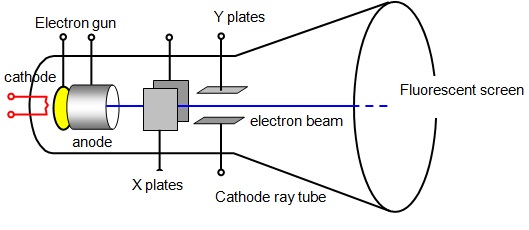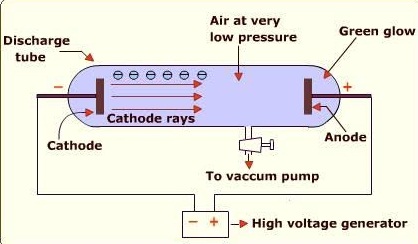It is a complex
equipment used in displaying waveforms from various sources and measuring p.d. It comprises of the following main components;
a)
The cathode ray tubes (CRT) - consists of a tube, electron gun, deflection plates and the time base (TB). The tube is made of strong glass
to withstand the pressure difference between the outside atmospheric pressure and the vacuum inside. It has a square grid placed in front of it to allow measurements to be made.
b)
The electron gun produces the electrons with main parts consisting of a filament, a cathode, a grid and the anode. Electrons are produced by the cathode when heated by the filament.
c)
The grid is a control electrode which determines the number of electrons reaching the screen, therefore determining the brightness of the screen.
d)
The Y-deflection plates deflects the beam up or down. Clearly observable when low frequency inputs are applied i.e. 10 Hz from a signal operator.
e)
The X-deflection plates are used to move the beam left or right of the screen at a steady speed using the time base circuit which automatically changes voltage to an a.c. voltage.
When time base control is turned, the speed can be adjusted to produce a waveform.


Examples
1. If the time base control of the CRO is set at 10 milliseconds per cm, what is the frequency
of the wave traced given wavelength as 1.8 cm?
Solution
Wavelength = 1.8 cm. time for complete wave = period = 1.8 × 10 milliseconds / cm
= 18 milliseconds
= 1.8 × 10-2 seconds.
Frequency 'f', is given by f = 1 / T = 1 / 1.8 × 10
-2
= 100 / 1.8 = 56 Hz.
NOTE:-
The television set (TV) is a type of a CRT with both Y and X-deflection plates which control the formation of a picture (motion) on the screen. The colour television screen is coated with different phosphor dots(chemicals) which produce a different colour when struck by an electron beam.


